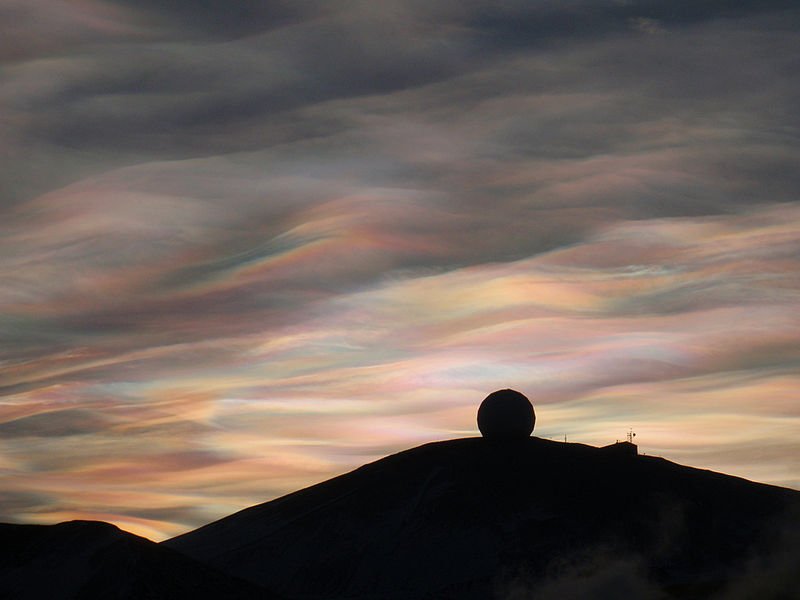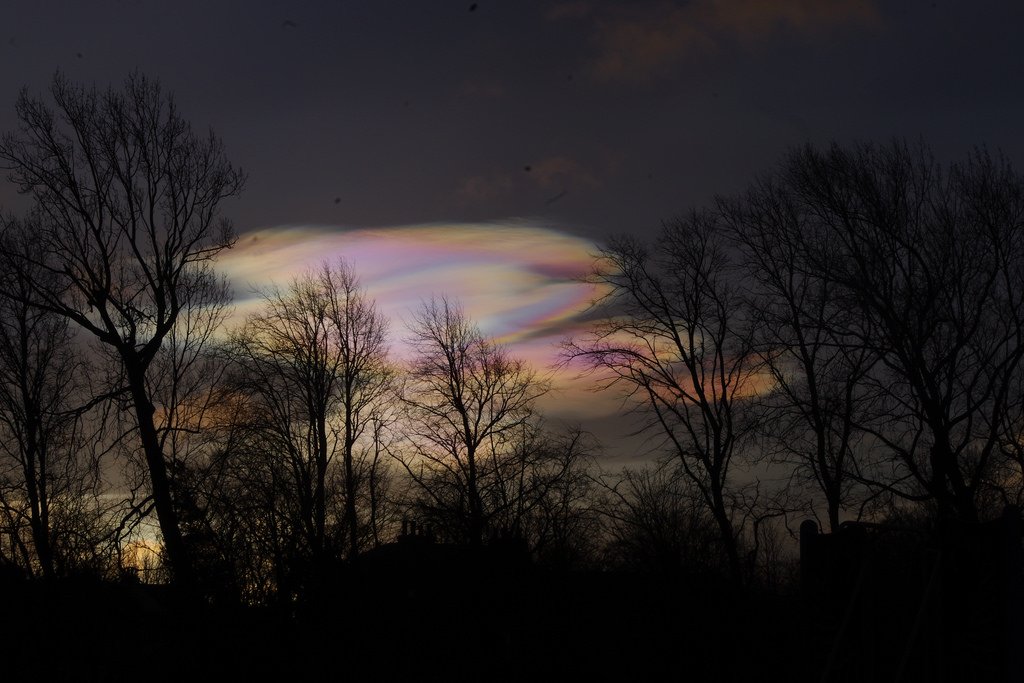Monday today and a new week begins, my friends! Welcome again to one of my posts on strange phenomena! Since I saw you liked so much the Skypunch article, I did some further research and dug out another weird cloud phenomenon that might look extraordinary and stunning but has its share of guilt in the ozone layer depletion.
So, what is on the menu for today?

(Image source: wikimedia.org)
Nacreous clouds!! A startling range of pastel colors forming over a canvas of clouds, giving you the impression you live in a fairytale!
How does nature paint them?
To make them we need a mixture of ice crystals, supercooled water and nitric acid (HNO3). Based on their chemical compounds, nacreous clouds can be further categorized under two basic categories, with the first being divided into three sub-categories (We won't get into further details here, I know it will bore you to death).
Next, we need temperatures below freezing (that would be below −78 °C / −108 °F). During polar winter it is viable to get such temperatures in the lower level of the stratosphere. They are also referred to as polar stratospheric clouds, because they form within the polar stratosphere (altitudes of 15-25 kilometers above ground).
Normally, we don't find clouds in such altitudes due to the lack of moist, a necessary factor for cloud formation. If it is a cloud to form in the stratosphere we need the extremely cold temperatures to provide the "vital" ice crystals of the water that is so sparse. That's why clouds are mainly created within the troposphere (the lowest part of the atmosphere), because there is more moisture and we don't need such low temperatures to initiate ice nuclei formation.

(Image source: flickr.com)
Now, during the winter we get the temperature-ingredient. That happens because there is little sunlight during the day, so the stratosphere temperatures drop dramatically. Thanks to the high latitude and the earth's surface curvature (another against-flat-earth argument) the clouds get plenty of sunlight at sunrise and sunset (when the sun is low on the horizon), reflecting this light brightly. Particles within the clouds' bodies diffract sunlight in different wave lengths displaying a wonderful array of colors.
Mother-of-pearls clouds seem to be motionless despite air movement through their body, or really slow-moving because there is a very long distance from the ground. They should not be mistaken for the ordinary iridescent clouds we meet in the troposphere. Unlike clouds in the troposphere, nacreous clouds are far more bright and showcase more vivid colors.
Where can we see them?
Nacreous clouds, as we aforementioned, occur in high latitudes (around the North and South Pole). This means they are most likely to be viewed over Antarctica, but you might also see them over the Arctic, Alaska, Iceland, Canada, Scandinavia, Scotland and northern Russia.
This is a video of nacreous clouds over Hawick in the Scottish Borders (02/02/2016).
What's so destructive about them?
Nacreous clouds pose a threat on the ozone layer, but not because they want to. Guess who is to blame again...humans! Our use of chlorofluorocarbons (CFCs) has dramatically negative effects in the ozone layer.
This is how the story goes:
When CFCs break down, other chemical compounds are produced like hydrochloric acid (HCl) and chlorine nitrate (ClNO3). When these products get into a nacreous cloud, they absorb the energy from sunlight (heat), they enter an unstable state and through a photochemical reaction they produce chlorine gas (Cl). Chlorine gas works as a catalyst in the ozone layer depletion, since one single molecule of chlorine is capable of destroying thousands of ozone (O3) molecules.
The optimistic thing in this case is that thanks to measures taken during the 1980's and 1990's, there has been a positive development and growth in the ozone layer, even though the ozone hole is still present. But if you consider that CFCs may need up to a century before they decompose, we must always be on alert.
Our planet is our home and our responsibility. Proper environmental education and raising awareness on ecological issues is one way to preserve our home and in the long run our children's future.
Here is a short video summarizing the basic facts about nacreous clouds:
References
wikipedia.org_1
wikipedia.org_2
cloudatlas.wmo.int
weather.com
atoptics.co.uk
nasa.gov
theozonehole.com

Thank you for stopping by and giving this post a read. I hope you enjoyed it!
If this post got your curiosity-radar on, feel free to follow me, @ruth-girl, for more fascinating phenomena!
You can also check some of the previous articles on this series:
15 - Ice Brinicles
16 - The Clone Forest
17 - A Skypunch
18 - Lake Baikal
19 - Mother-Of-Pearls Clouds
20 - The Hessdalen Lights

And for those engaging with education, @steemiteducation is here to join all steemian educators in their common cause of making our job easier, more effective and more fun!
Finally, the greek community of steemit is here and waiting for you to discover it! Follow the @greek-trail for daily doses of good-quality posts by wonderful writers!
Until my next post,
Steem on, people, and keep smiling!



